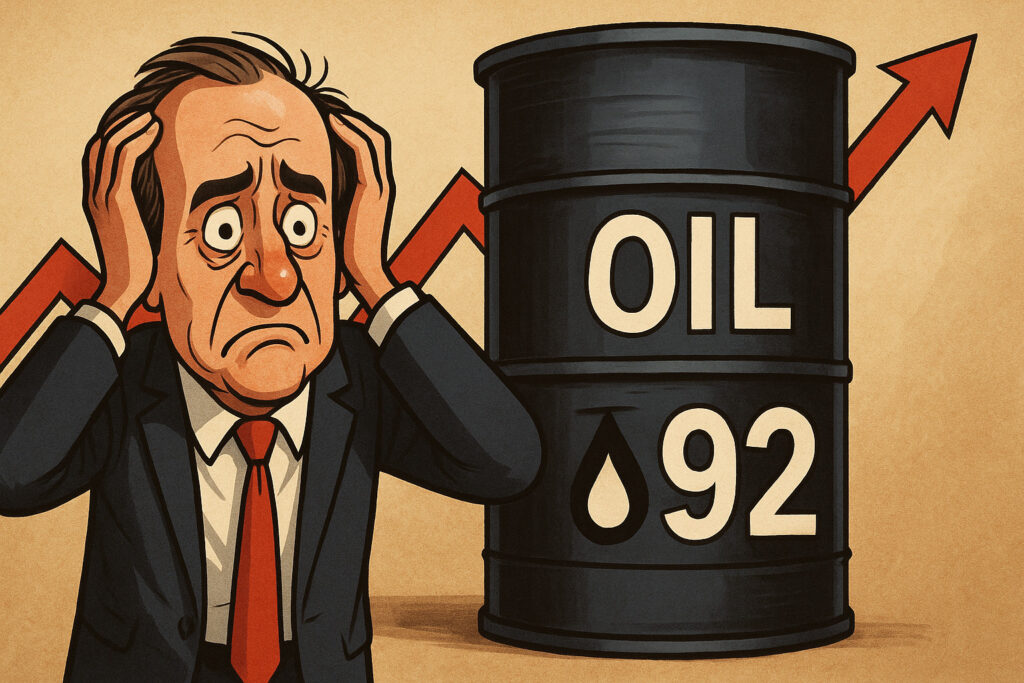Introduction
Global oil markets experienced a dramatic surge on April 2, 2025, with Brent crude soaring above $92 per barrel. The catalyst for this price spike was OPEC+’s announcement to extend its current production cuts into the second quarter of the year. This decision, made during a highly anticipated ministerial meeting, underscores the alliance’s strategy to support prices amid fluctuating demand and ongoing geopolitical risks.
The Market Response
Immediately after the OPEC+ announcement, global oil benchmarks reacted strongly:
- Brent Crude surged 3.2%, closing at $92.45 per barrel.
- West Texas Intermediate (WTI) jumped 3.5%, ending the session at $89.30 per barrel.
Investors interpreted the move as a reaffirmation of the group’s commitment to market stability. Energy stocks rallied in tandem with the rise in crude prices, while airline and logistics sectors saw declines due to anticipated cost pressures.
Details of the OPEC+ Decision
At the heart of the announcement was a continuation of the 2.2 million barrels per day (bpd) cut, initially agreed upon in late 2024. Key players such as Saudi Arabia and Russia reaffirmed their leadership by shouldering the largest portions of the reduction.
Key Points:
- Duration: Cuts extended through June 2025.
- Countries Involved: All major OPEC+ members, with Saudi Arabia cutting an additional 500,000 bpd.
- Objective: To prevent oversupply, stabilize prices, and maintain market balance amid economic headwinds.
This extension comes in the wake of sluggish demand growth in China and a weaker-than-expected recovery in European energy consumption.
Strategic Motivations Behind the Cuts
1. Geopolitical Instability
Heightened tensions in the Middle East, including renewed Houthi attacks near the Strait of Hormuz and unrest in Libya, have kept supply chains fragile. OPEC+ is using production discipline to buffer against these uncertainties.
2. Macroeconomic Backdrop
- U.S.-China trade frictions continue to weigh on global economic sentiment.
- Inflationary pressures remain persistent in major economies, including the U.S. and the Eurozone.
- The International Monetary Fund (IMF) recently downgraded its global growth forecast to 2.8% for 2025, emphasizing the need for economic caution.
3. Oil Inventory Trends
OECD crude inventories have dipped below their 5-year average, giving OPEC+ more leeway to manage supply without immediate risk of oversupply.
Economic Implications
For Oil Exporters:
Countries like Saudi Arabia, UAE, and Russia benefit directly from higher prices, boosting government revenues and strengthening fiscal positions.
For Importers:
- Nations like India and Japan face rising fuel import bills.
- Central banks in oil-importing economies may reconsider monetary easing due to inflation pass-through from energy prices.
For Consumers:
- Gasoline prices have already increased by an average of 8 cents per gallon in the U.S. since mid-March.
- Higher transportation costs could pressure retail prices, especially in food and logistics.
Impact on Inflation and Monetary Policy
Energy prices are a crucial driver of headline inflation. Analysts warn that if crude remains above $90 for an extended period:
- U.S. CPI could rise by 0.3 to 0.4 percentage points.
- The Federal Reserve may delay potential rate cuts originally forecasted for Q3 2025.
- In the Eurozone, the ECB may continue its cautious stance, particularly if core inflation trends upward.
Sectoral Market Reactions
Winners:
- Energy Sector: Major oil companies like ExxonMobil, Chevron, and Shell saw share price gains between 2-4%.
- Oilfield Services: Firms like Halliburton and Schlumberger also surged on expectations of sustained investment in exploration.
Losers:
- Transportation and Logistics: FedEx and Delta Airlines saw slight pullbacks.
- Consumer Discretionary: Retailers and hospitality companies anticipate margin pressure from higher fuel costs.
Technical Analysis
From a technical perspective, Brent’s breach of the $92 resistance level sets the stage for a potential test of $95, a level last seen in late 2023. WTI, closely tracking Brent, shows a bullish setup with moving averages aligning for further upside.
Analyst Commentary
“OPEC+ is once again showing it can influence global oil markets decisively. The timing of this extension, amid slowing global growth, signals a clear intent to floor prices around $90.”
— Laura Menendez, Energy Strategist, JPMorgan Chase
“If demand picks up even slightly, we could be looking at $100 oil by early summer.”
— Hassan Jaber, Head of Commodities Research, ING
Future Outlook
Market participants will now closely monitor:
- Compliance levels within OPEC+.
- U.S. shale production response, as higher prices make new drilling economically viable.
- Geopolitical developments, especially in the Middle East and Ukraine.
- Demand recovery from key consumers like China and India.
The balance of supply discipline versus demand recovery will define the oil trajectory into Q3 2025.
Conclusion
The extension of production cuts by OPEC+ has reasserted the cartel’s ability to shape market dynamics, even amid a complex and unpredictable global backdrop. With Brent crude now solidly above $92, the stakes are high for both consumers and producers. Central banks, investors, and governments alike will need to recalibrate strategies in light of the new oil price paradigm.
Key Takeaways
- OPEC+ extends 2.2M bpd cuts through June 2025.
- Brent crude rises to $92.45, WTI to $89.30.
- Global inflation pressures may intensify.
- U.S. rate cuts could be delayed.
- Sector rotation into energy stocks underway.
Stay tuned as we continue to monitor how oil’s resurgence shapes the broader financial landscape.
